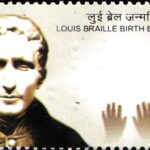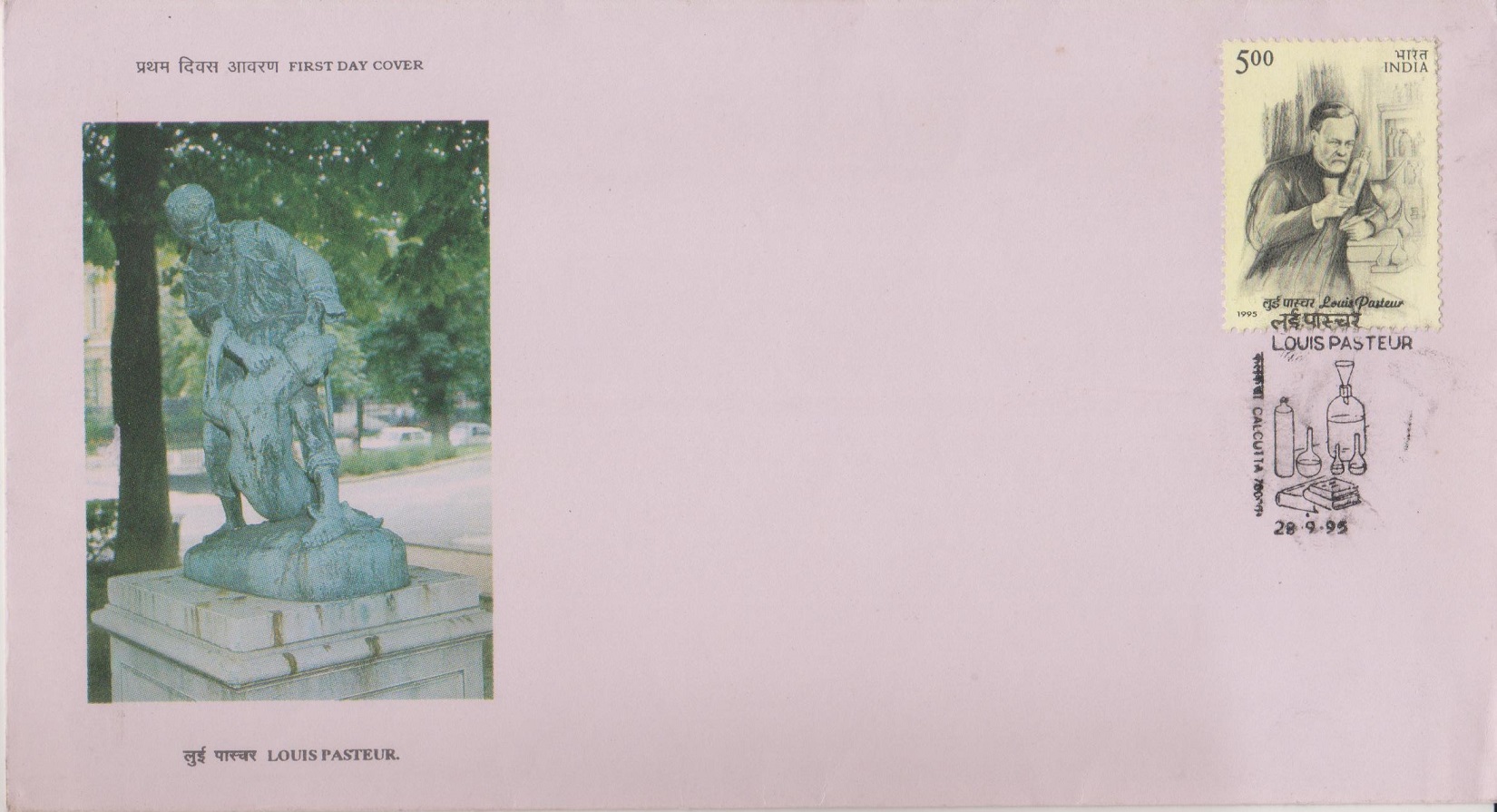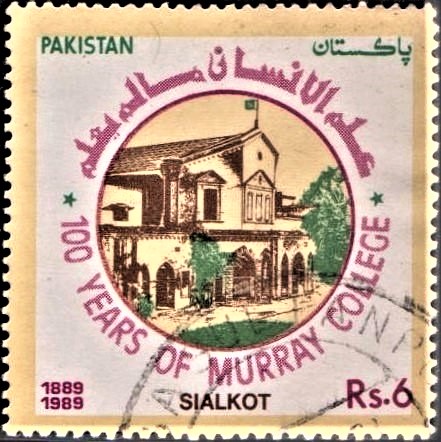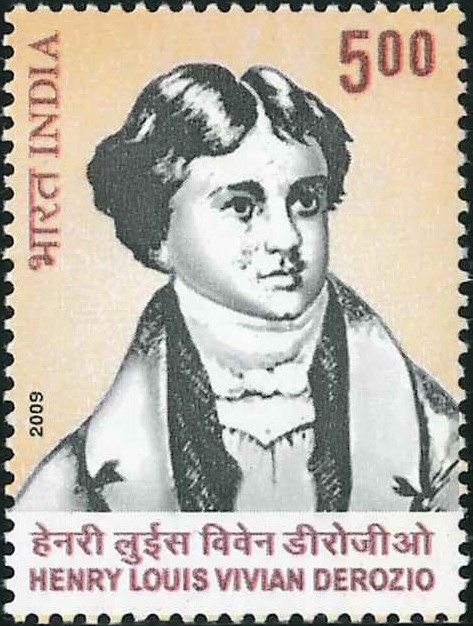
Henry Louis Vivian Derozio
A commemorative postage stamp on the Birth Bicentenary of Henry Louis Vivian Derozio, an Anglo-Indian radical thinker, pioneer of the Bengal Renaissance :

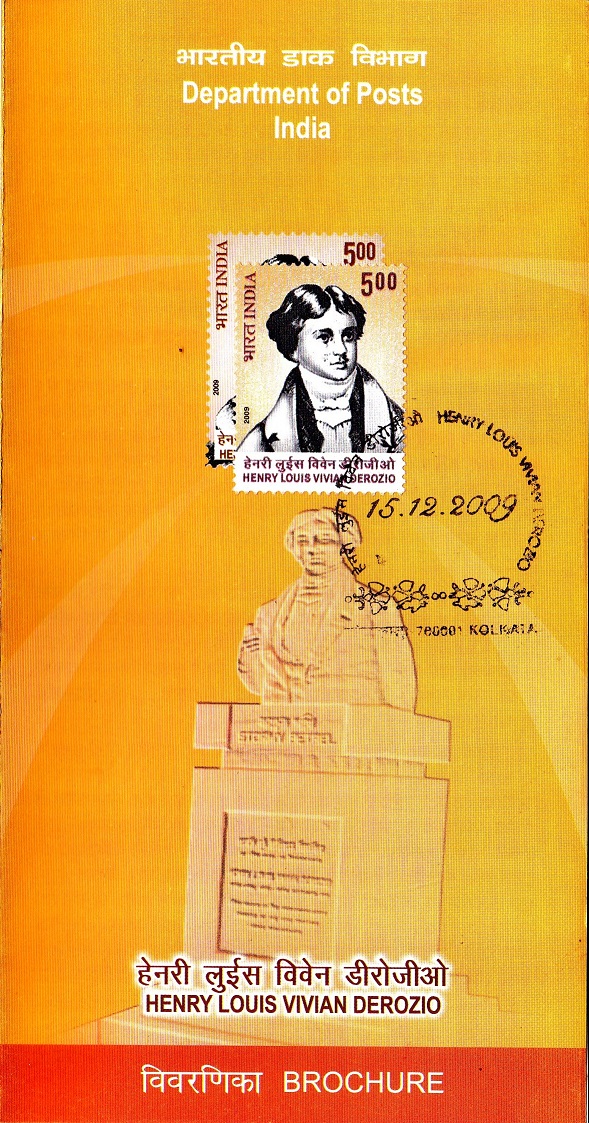 Issued by India
Issued by India
Issued on Dec 15, 2009
Issued for : The Department of Posts is happy to “strike the strain” in honour of Henry Louis Vivian Derozio by issuing this commemorative postage stamp.
Credits :
Stamp & FDC : Brahm Prakash
Cancellation : Alka Sharma
Type : Stamp, Mint condition
Colour : Multi Colour
Denomination : 500 Paise
Stamps Printed : 0.4 Million
Printing Process : Wet–offset
Printer : India Security Press, Nasik
Name : De Rozario
Born on Apr 10, 1809 at Kolkata, West Bengal, India
Died on Dec 26, 1831 at Kolkata, West Bengal, India
About :
- Nineteenth-century Bengal Renaissance was characterized by a massive socio-cultural churning, marking a watershed moment in the Indian ethos where tradition met modernity. It was ignited by a man whose radicalism and free-thinking challenged the obscurantist and superstitious orthodoxy of the time – Henry Louis Vivian Derozio, widely regarded as the pioneer of the Bengal Renaissance. He was born on 10th April 1809.
- Portuguese by descent, he was a liberal-humanist at heart. His radical style of teaching at Hindu College, Kolkata (the present Presidency College) questioned all issues – from colonialism to women’s education to social customs. The teacher and the student moved beyond classroom teaching to discuss and deliberate upon ideas. The Young Bengal movement, as it was called, became a trigger for free enquiry. The vast conservative majority saw this as a major threat to traditional norms. The Governing Body of the College reacted later by expelling Derozio on charges of attempting to turn young people into atheists and provoking the young into disregarding traditions.
- Despite the expulsion, Derozio’s influence continued unabated, not only taking Kolkata of his time by storm, but setting the tenor of most of the socio-religious reform which was to follow in the latter half of the 19th century. “Expanding like the petals of young flowers,” he wrote in a sonnet for his students, “…I watch the gentle opening of your minds…”.
- Equally intense was his poetry, which he started composing at a very early age, and contributing to the “India Gazette” magazine under the pseudonym Juvenis. He went on to become the Assistant Editor of the India Gazette in Kolkata and published a volume of poems at the young age of 18. In 1827-28, he published a second volume of poems, which was a reprint, but with some notable additions like “The Faqir of Jungeera”, a poem which established him as the first modern Anglo-Indian poet to be published in English, a trend which continued right up to Sarojini Naidu and further.
- His use of the English language idiom and his poetry was inextricably linked with the tussle between traditional orthodoxy and the rise of the modern free-enquiry spirit. It reflected contemporary thinking on issues like widow remarriage, the glory of India as seen in its literature and art etc. This body of English writing by Derozio and Rammohan Roy and others, created a new idiom in Indian literature and ushered in the transition from the classical-vernacular to the new modern-day language of the colonialists.
- But the real legacy of Derozio lies in his challenge to an obscurantist and divisive agenda, a legacy which is still relevant to India, a legacy which was to inspire the founding of Devendranath Tagore’s Tattvabodhini Sabha, an attempt to find a middle ground between the best of tradition and modernity. The Brahmo Samaj and the Ramakrishna Mission later were to be predicated on this notion of the middle path which Indian society should take in the late 19th-century. An intense nationalism characterizes his work, along with the equally radical nature of his questioning of the social customs and religious beliefs of his time. Truly a Renaissance man, who died at the very young age of 22 in 1831, Henry Derozio, long relegated to the margins of Indian history, must be revisited to understand the continuing relevance of his ideas today, in a world still divided on the fault-lines of caste and creed. The legacy of Henry Derozio needs to be resurrected, not only as a poet but as a national figure who was the first among great luminaries of the 19th century to awaken national consciousness. As he wrote in “Harp of India”: “This music once was sweet, who hears it now…. Harp of my country, let me strike the strain…”
- Derozio breathed his last in December 1831.
- Text : Pranav Khullar.
Subscribe
Login
0 Comments


